
Step into the factory founded by Yang Yurong, a master of Chinese arts and crafts and a national representative inheritor of Foshan color lanterns, one will be greeted by a dazzling array of colorful lanterns. In 2023, the Chinese Year of the Rabbit, the factory is adorned with rabbits of all sizes, exuding an adorable charm.
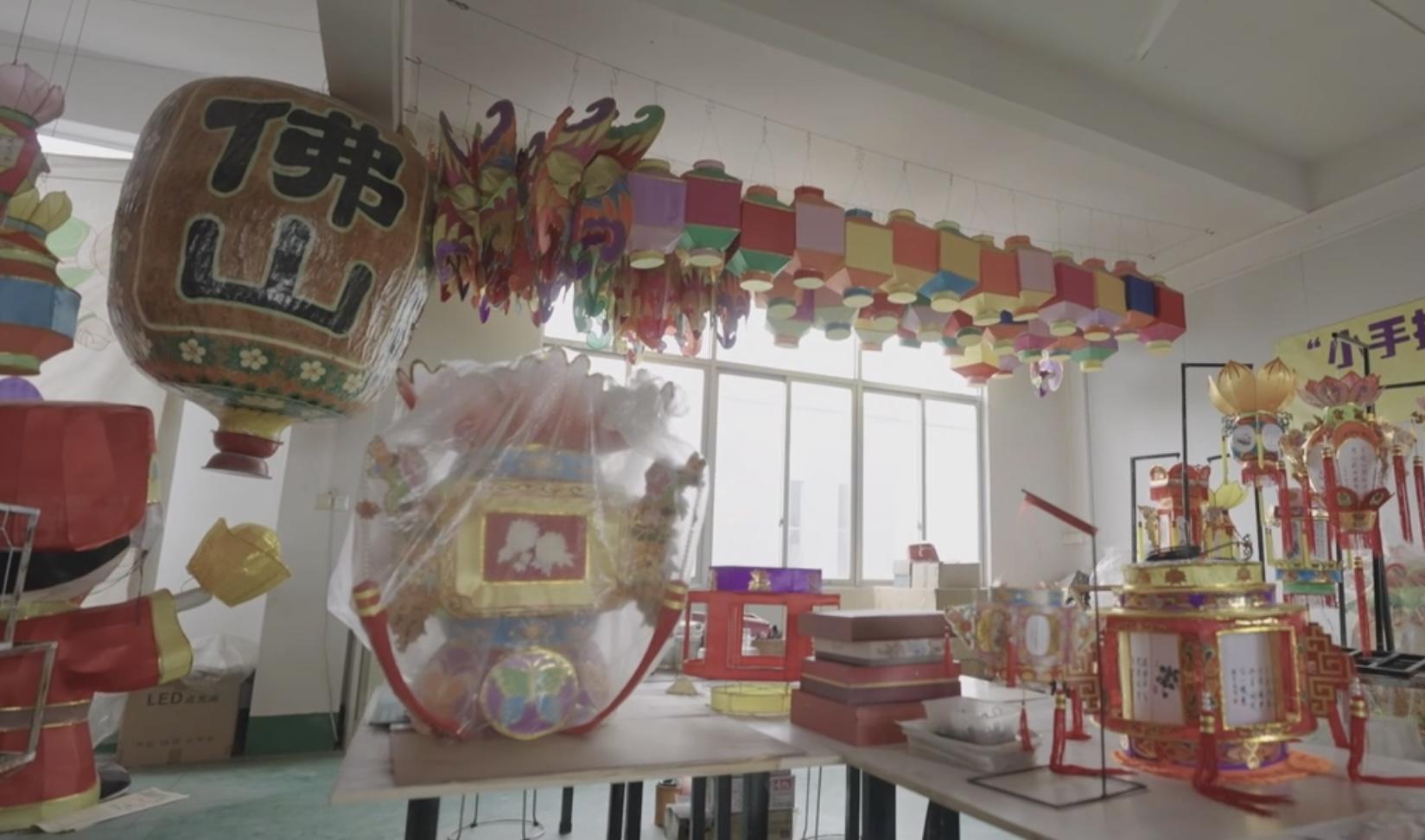
Even at the age of 78, Yang Yurong remains dedicated to color lantern making. She says to the reporter, "I have a special fondness for making lanterns. Despite retiring 18 years ago, I never stopped pursuing my passion. Doing what I love brings me immense happiness."
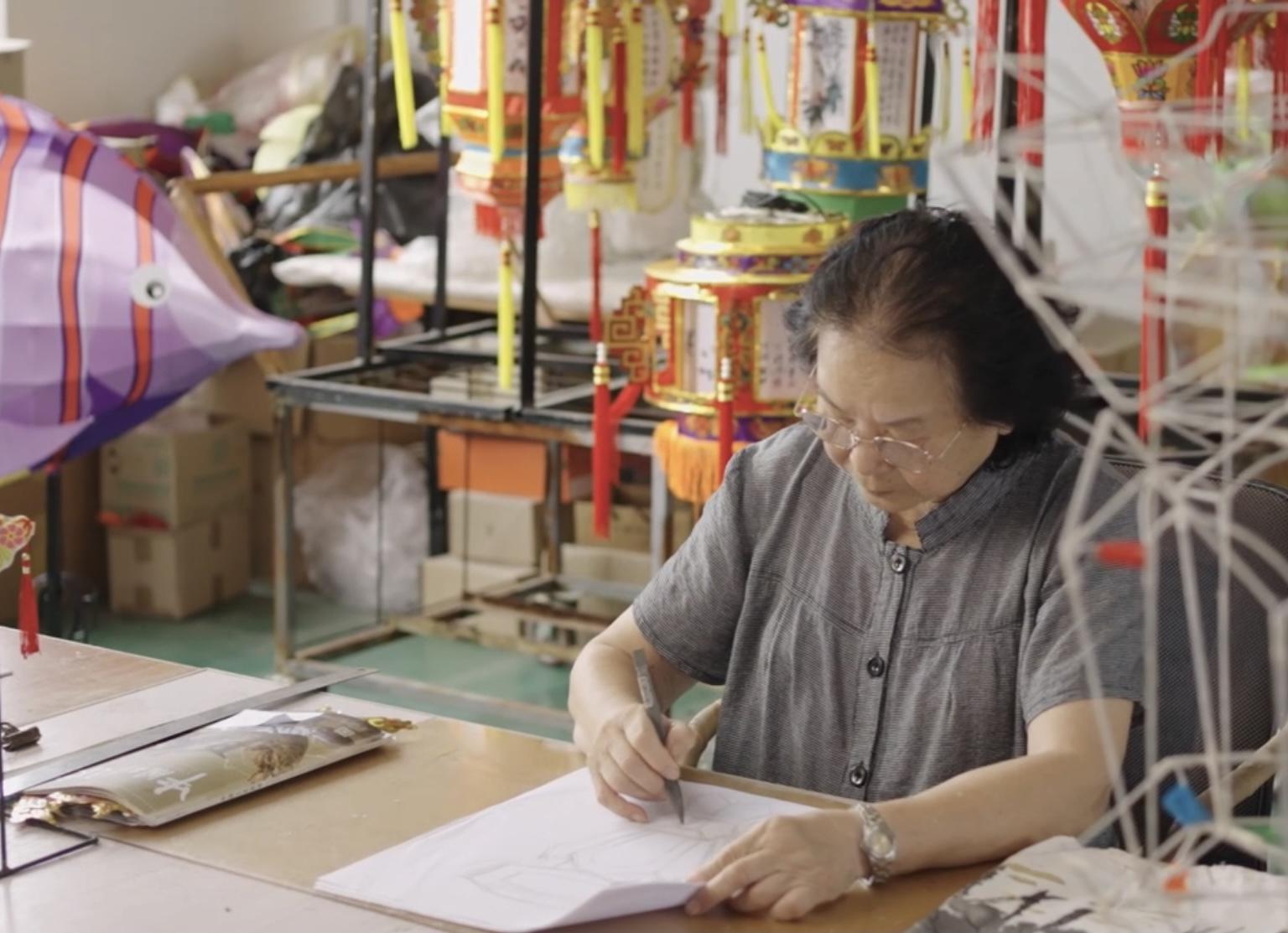
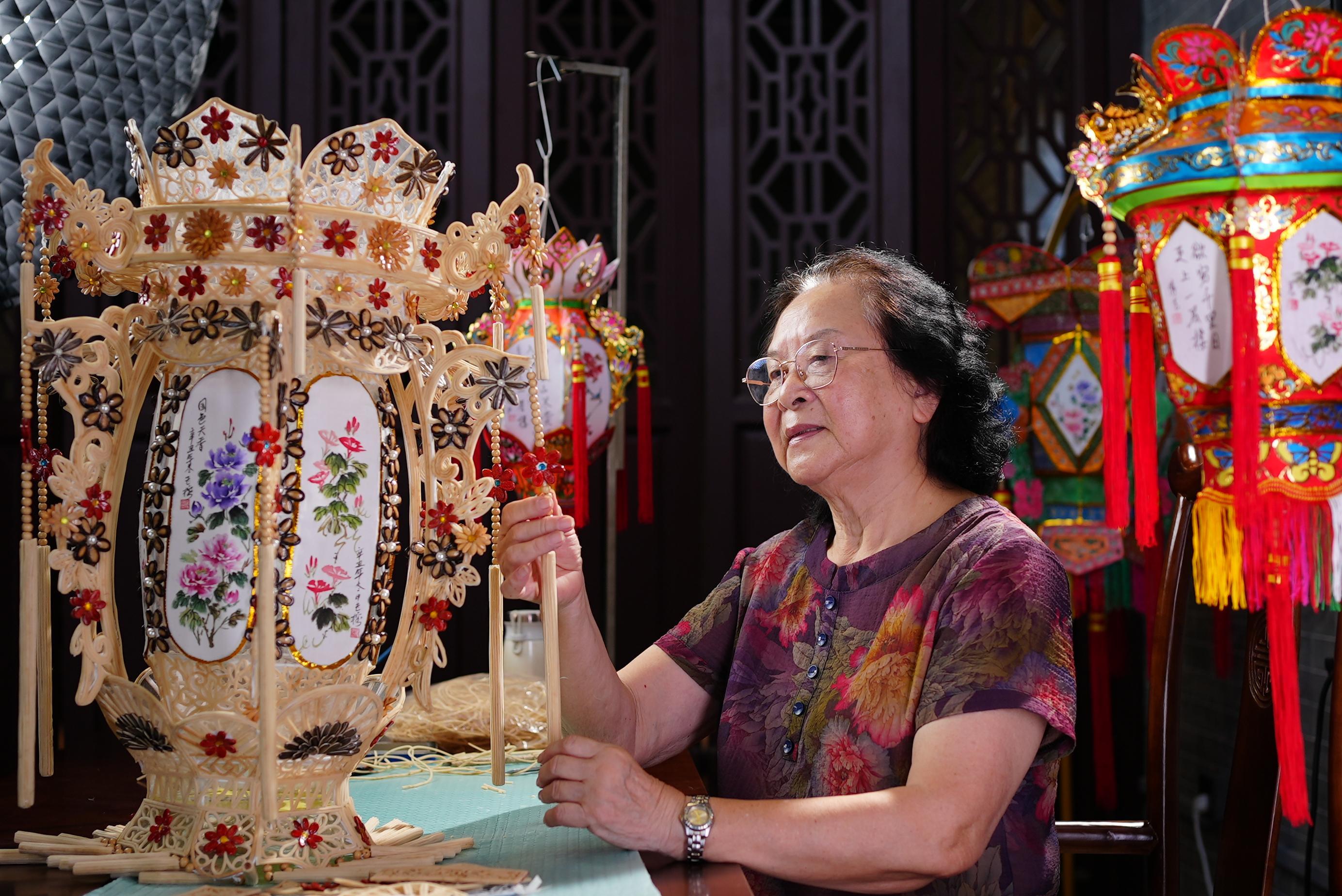
Renowned for its exquisite craftsmanship, Foshan color lanterns are one of the main schools of traditional Chinese lantern art.
Since the Song Dynasty, Foshan color lanterns have thrived alongside customs such as the Lantern Festival and Mid-Autumn Festival. During the Ming and Qing Dynasties, folk art competitions became popular in Foshan, with the illuminated procession being particularly favored. The industry of color lantern production flourished, significantly contributing to the local market and becoming an important craft for domestic sales and exports. In the Qing Dynasty, various types of lantern-making techniques branched out into their own business, leading to a flourishing trade.
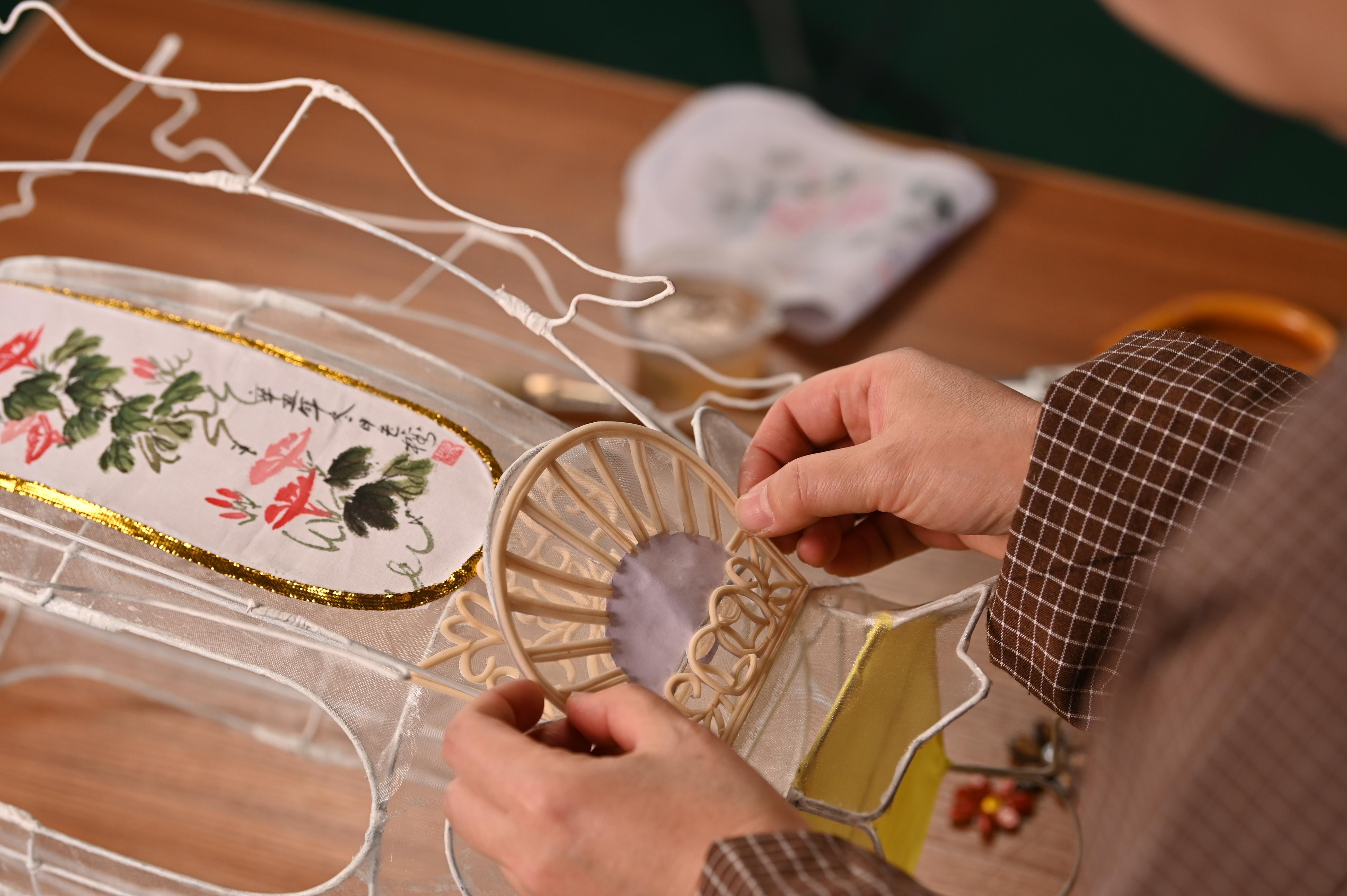
According to Yang Yurong, the design and production of color lanterns remain closely intertwined with the needs of daily life. "Color lanterns create a lively atmosphere and embody the beautiful symbolism of social harmony for a close tie with festivals and events. As people's living standards continue to improve, color lanterns will also grow in size and variety to meet market demands."
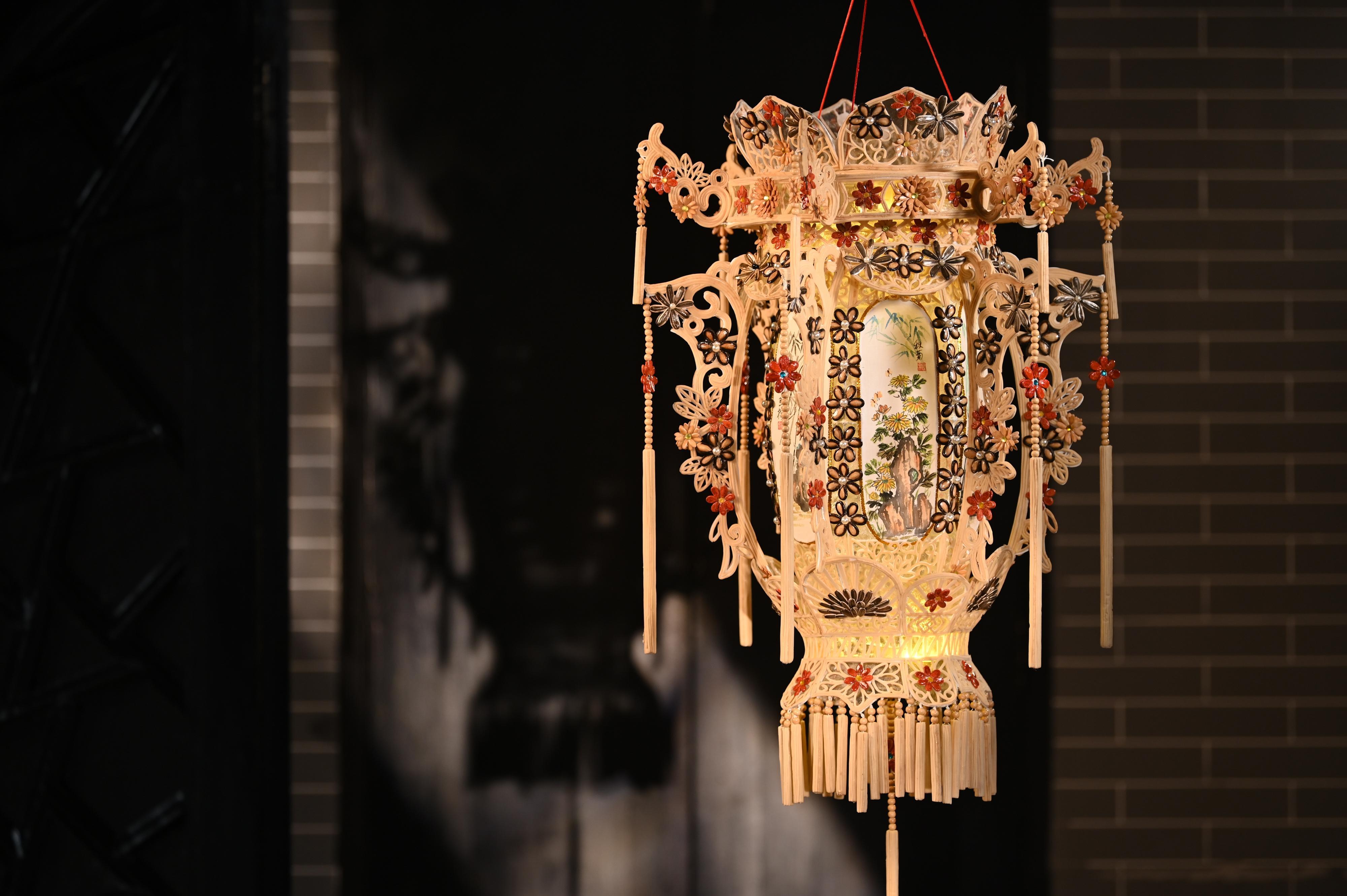
Among the numerous categories of Foshan color lanterns, there is a unique style known as the "Qiuse color lantern". Every year after the autumn harvest, local Foshan craftsmen spontaneously use materials such as sesame, melon seeds, beans, rice-paper plants, and soft rash to cut, carve, and paste into various patterns, creating delicate and translucent fish-scale lanterns, soft-rush lanterns, and bean lanterns.
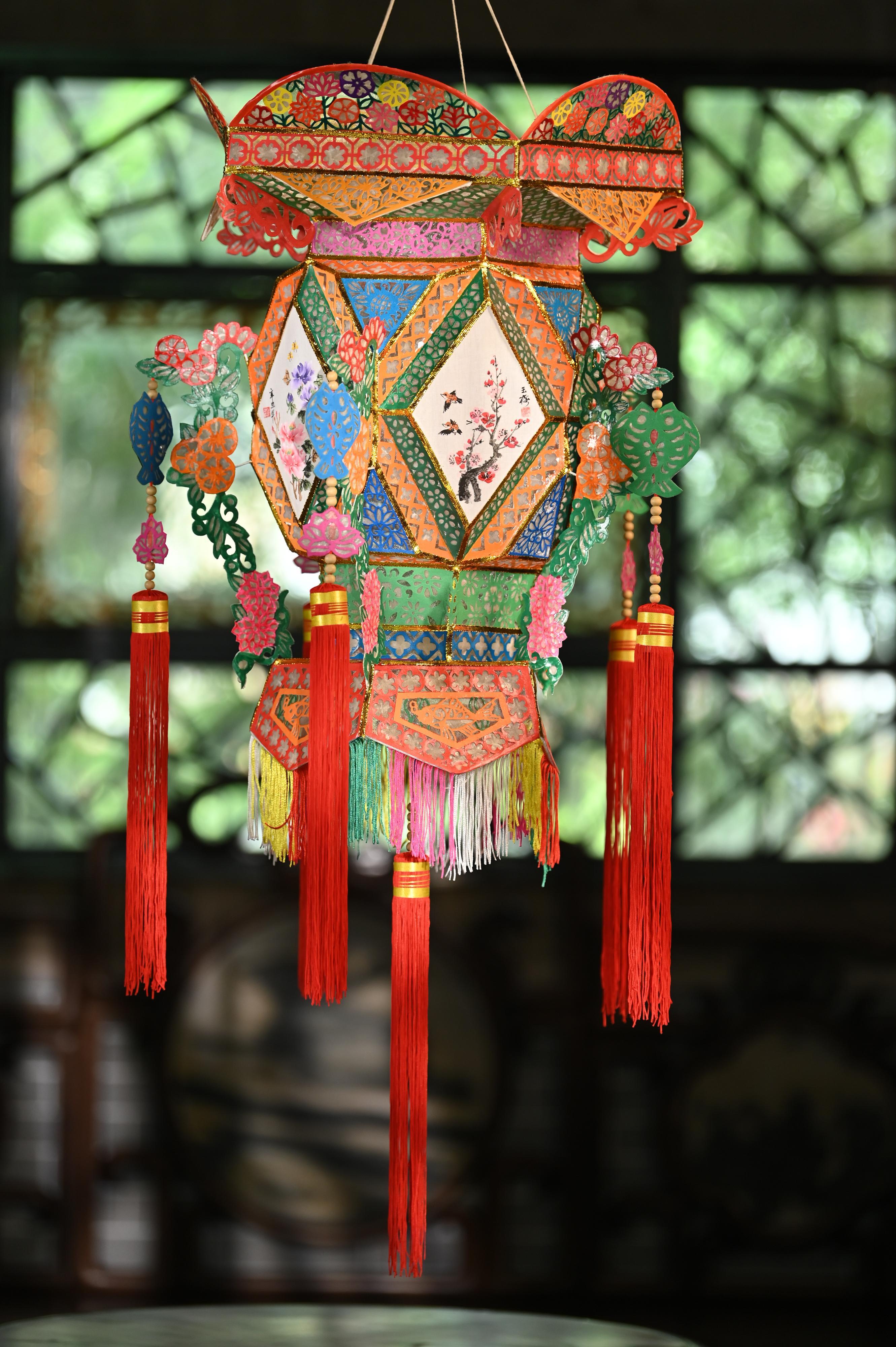
In 2004, after retiring, Yang used solid-colored soft rush to create linear patterns and embellished them with melon seeds in the shape of flowers, thus bringing a soft-rush lantern with melon seeds.
In 2009, Yang designed the "Colorful Fish-Scale Lantern". Unlike the other types made by her predecessors using black cardboard, she utilized vibrant colored paper to carve out patterns and then attached fish scales. The lantern not only shines brightly at night but also displays a colorful artistic effect when illuminated by daylight.
With the innovation of the technique of carving cuttlebones, Yang transformed them from small ornaments into hollow and stereoscopic cuttlebone lanterns that are clean, translucent, and exude an air of elegance.
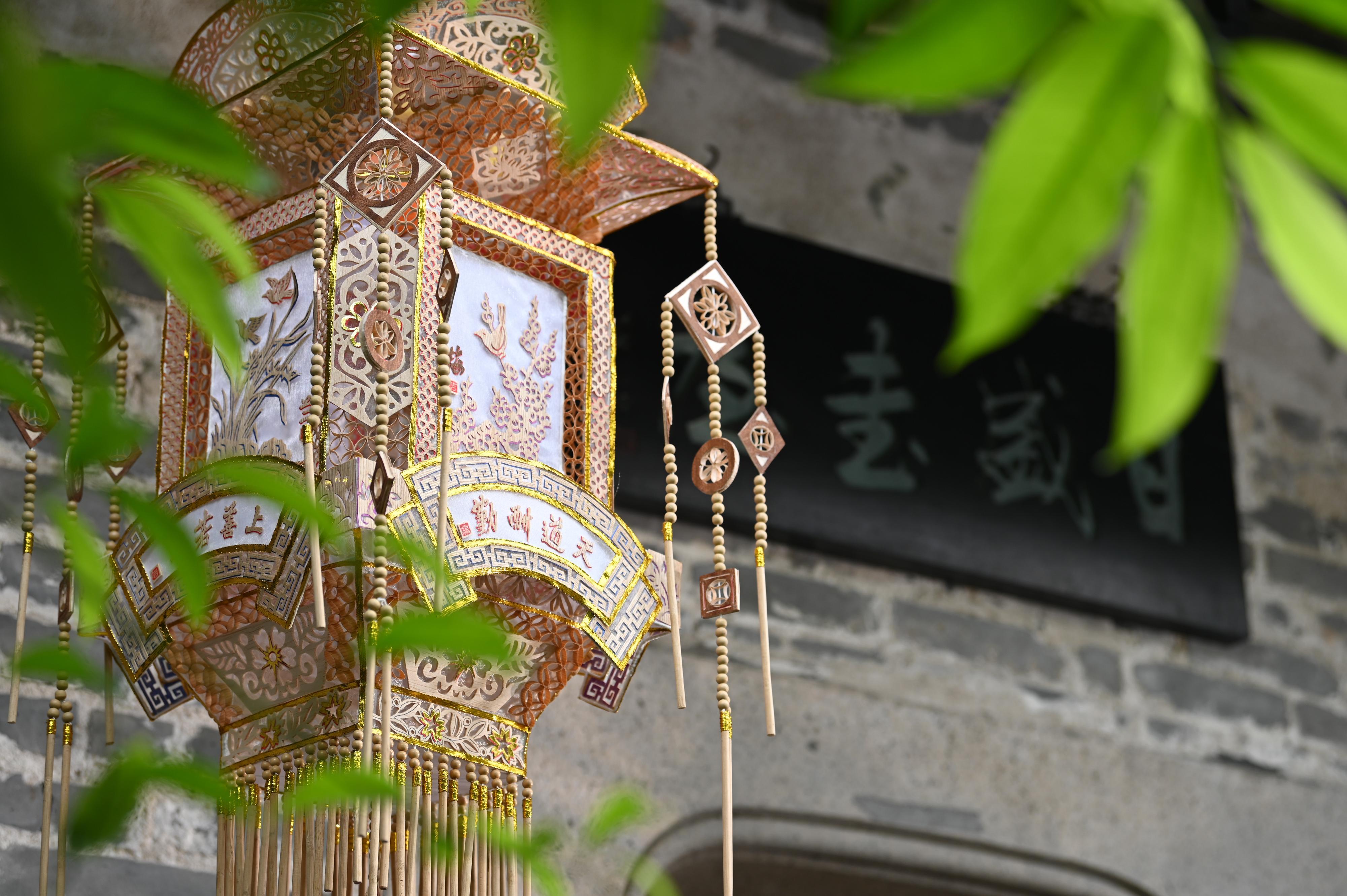
In recent years, Yang Yurong's factory has been creating large-scale color lanterns for exhibitions and sales in regions such as Hong Kong and Macau. During traditional festivals like the Spring Festival and Mid-Autumn Festival, they also produce festive color lanterns for the Hong Kong Special Administrative Region government, which are showcased in Victoria Park and other locations.
Recently, Yang Yurong established a new studio in the Shi' anli ancient architecture group, north of the traditional building Liang Yuan in Foshan. This area is home to numerous intangible cultural heritage experience centers, including Kung Fu massage, clay sculpture, Xiangyun silk, and paper-cutting. Here, Yang continues her inheriting and innovating work of making Foshan color lanterns.
【视频】杨玉榕:匠心守护佛山彩灯工艺60年|走进名家工作室⑦
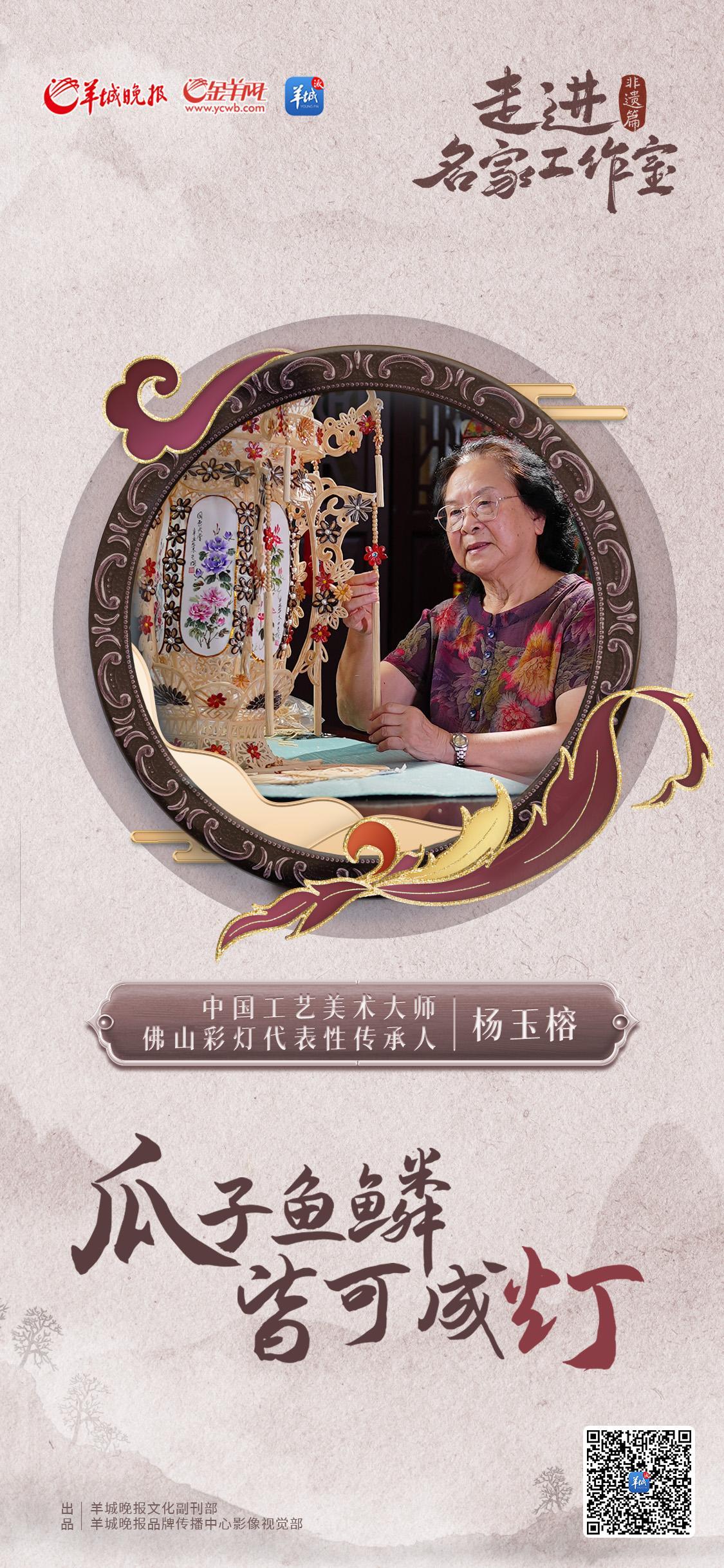
走进中国工艺美术大师、佛山彩灯国家级代表性传承人杨玉榕创立的工厂,各式各样、色彩斑斓的彩灯琳琅满目。今年是兔年,工厂内大大小小的兔子彩灯错落有致,甚是可爱。
如今,78岁高龄的杨玉榕依旧坚持彩灯制作。她对记者说:“我特别喜欢做灯,退休18年,退而不休,做自己喜欢的事,有满满的幸福感。”
佛山彩灯俗称灯色,是中国传统彩灯艺术的主要流派之一,具有南方彩灯精巧秀丽的特色。
宋代以来,随着元宵灯会、中秋赏灯等风俗在佛山兴起,佛山彩灯应运而生。明清时期,佛山又兴起民间艺术赛会,其中以巡行方式展示彩灯的“提灯会”尤为盛行,彩扎灯色生产也逐渐成行成市,并成为佛山城乡内销和出口贸易的重要工艺品种。到了清代,各门类的扎制工艺细分成各自的行业,“扎作行”十分兴盛。
在杨玉榕看来,彩灯的设计与制作仍然与生活需求紧密结合。“因为彩灯与节庆和活动密切相关,能营造一种热闹的气氛,展现社会和谐的美好寓意。随着人们的生活水平不断提高,彩灯也会随着市场需求而不断壮大。”
在佛山彩灯众多品类中,有一种是全国独有——秋色特艺灯。每年秋收后,佛山民间艺人自发将芝麻、瓜仁、豆类、通草、灯芯草等原料,剪刻、粘贴成各类纹样图案,组成玲珑剔透的鱼鳞灯、通草灯、豆类灯等。
2004年,退休后的杨玉榕将瓜子和灯芯草结合起来,用柔软的纯色灯芯草粘成线条图案,用瓜子砌成花朵图案作为点缀,制成一款“灯芯瓜子灯”。
2009年,杨玉榕创作了一款“五彩鱼鳞灯”。与其他师傅用黑色卡纸制作的鱼鳞灯不同,她利用各色艳丽的卡纸刻出图案,再贴上鱼鳞,不仅在夜晚亮灯后通透明亮,在日光下也带有色彩斑斓的艺术效果。
她还对墨鱼骨雕刻工艺进行创新,将原来用于制作小摆件的墨鱼骨,雕刻成中空而立体的墨鱼骨灯,颜色洁净、玲珑剔透、高贵典雅。
近年来,杨玉榕的工厂每年都会在香港、澳门等地区制作大型彩灯展出和销售,每逢春节、中秋等传统节日还会为香港特区政府制作节庆用的灯色,在维多利亚公园等地展出。
前不久杨玉榕在佛山梁园北侧的适安里古民居群设立了一间新的工作室。这一带聚集了功夫推拿、陶塑、香云纱、剪纸等众多非遗项目体验馆,杨玉榕将带着她的技艺在这里继续开展佛山彩灯的传承与创新工作。
文|记者 周欣怡 朱绍杰
图、视频|彭灏明 陈贤宇戚容源 彭泽祥 唐德荣 林丹丹 张嘉浩(实习) 吴沐萱 (实习)
出品人:杜传贵 林海利
策划:孙爱群 陈桥生
监制:邓琼 蒋铮 吴小攀
统筹:朱绍杰 何奔
执行:周欣怡 彭灏明 文艺 黄宙辉 孙磊
海报设计:胡斌斌
翻译|陈萱
责编 | 王瑜瑛
-
Video|Yang Yurong: 60 years of craftsmanship in Foshan color lanterns | Master's Workshop
2023-10-22 00:35:50 -
Guangzhou Metro showcases 'Belt and Road' themed China chic AR scroll
2023-10-22 00:36:34 -
128 dragon boat teams participate in water marathon in Foshan
2023-10-04 23:06:56 -
Vídeo|"Programa Marítimo de Guangdong" termina as filmagens de dez curtas-metragens para uma estreia oficial em outubro
2023-09-12 16:15:42






